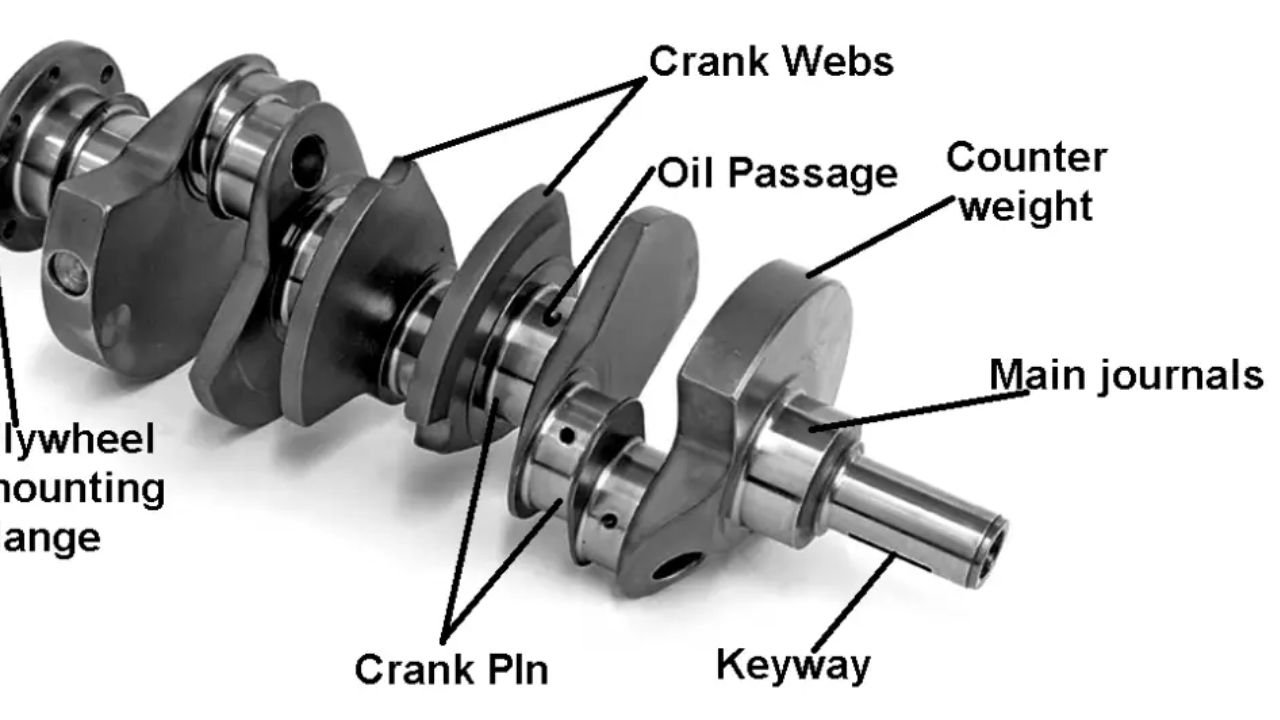The crankshaft cap, a significant component of the internal combustion engine, protects the main or primary bearings located within the engine block. It allows the crankshaft to rotate easily while holding the forces produced during ignition. It is helpful in distributing the load from ignition to the whole engine. It helps align the crankshaft appropriately, forbidding damage to the bearings and crankshaft. This post discusses all the important things you must know about this mechanical component.
Main Functions of the Crankshaft Cap In Effective Engine Operation
A crankshaft or engine bearing cap is important for the smooth working of engines. Here are the main functions of this mechanical device, which you must be aware of:
1. Hold the Crankshaft
They provide the required support to the crankshaft. Thereby, result in forces throughout ignition and the piston’s movement.
2. Protect Bearings
These caps are attached to the engine block, which keeps the crankshaft bearings in position. They prevent the bearings from moving under the engine’s force, as doing so can damage the engine or ultimately result in failure.
3. Stop Oil Leakage
They also help in sealing the engine, stopping oil leakage, and ensuring effective lubrication of the bearings and crankshafts.
4. Maintain Proper Alignment
These caps ensure the crankshaft is properly aligned within the engine’s block and are crucial for flawless and effective rotation.
5. Decrease Wear and Friction
By keeping the bearings safe, these caps are useful in reducing wear and tear, as well as friction between the engine block and crankshaft.
6. Add to Engine Performance
These caps play a crucial role in the engine’s durability and performance. They maintain proper alignment, support, and lubrication to contribute to the engine’s complete life.
What Are Different Types of Crankshaft Caps?
There are three prominent types of crankshaft bearing caps:
1. Connecting Rod Caps
These caps comprise components such as graphite cast iron and carbon steel. They also include the small and big ends, bolt, bushing, nut, shank, piston, and wrist pin. These caps are based on the top position of the connecting rod, which is further classified into full-cap and split-cap connecting rods. Full-cap connecting rod caps are a solitary piece that shields the entire bearing. A split-cap connecting rod has two isolated pieces that attach onto the engine block and the linking rod.
2. Main Bearing Caps
Main bearing caps are situated at the base of the engine block to keep the main bearings in position. They are designed to allow oil to flow through the crankshaft and piston through a delicate cover. They are made of cast iron but can also include aluminum, steel, plastic, and other materials. These caps are additionally classified into two subtypes: one and two-piece main bearing caps. One-piece caps are integrated into the engine block, while two-piece caps are independent components that attach to the engine block.
3. Camshaft Bearing Caps
In an engine, there are one to seven bearings present in a camshaft. There are two types, like roller camshafts and flat tappets. The main task of these bearing caps is to maintain the flow of fuel into the engine and to remove fumes from it.
Factors To Consider While Selecting The Right Crankshaft Cap
If you are looking for a lasting and well-performing crankshaft bearing cap, consider the factors discussed below:
1. Check Dimensions and Fit
To choose the right crankshaft cap, you need to make sure it has proper dimensions that go with the crankshaft specifications and the engine block. A proper fit is essential for extended support and to prevent issues such as the cap’s movement under pressure. Check the circularity and taper to make sure it fits correctly on the crankshaft log.
2. Consider Material’s Sturdiness and Strength
When you are looking for crankshaft caps, choose a material that can resist the forces produced by the movement of connecting rods and pistons. Choose materials like forged steel, which provide increased strength and durability. You can also choose caps made of powdered metal, which offers extended durability compared to iron but cannot match the power of billet steel.
3. Think About Operating Temperature
The operating temperature of an engine can affect the working of a cap. Therefore, it is essential to choose a material that can withstand the anticipated temperature range. An increased temperature can result in the enlargement of material and potential problems in sealing.
4. Sealing Efficiency
A crankshaft cap must be able to block the bearing housing, thereby preventing any oil leakage. Check the sealing method employed, like oil seals. Also, make sure it is consistent with the working conditions of an engine, like pressure, temperature, and others.
5. Verify Cost and Accessibility
Confirm the cost and accessibility of the crankshaft cap from trustworthy iron foundries in usa. A well-balanced combination of cost, durability, and performance is crucial for optimal engine design.
6. Inspect For Any Damage and Maintenance
You should always check for any signs of wear or tear on a crankshaft cap before setting anyone. Daily inspection and maintenance of the cap are essential during engine service, ensuring its constant and proper functioning.
7. Consider Your Targeted Use and Performance Standards
When your usage comes under a high-performing niche, then updating to a more powerful cap material and design is considerable. In fact, high-performing engines generally produce a high amount of force and heat, thus needing more effective and sturdy components.
Final Words
Crankshaft caps, also known as engine bearing caps, are a crucial component in internal combustion engines. They are able to keep the engine bearings in good condition and stop them from moving under extra force produced by the engine. AKP Ferrocast, a renowned supplier of bearing caps, helps improve your engine’s performance, which is crucial to its overall efficiency and reliability. Implementing the bearing solutions provided by AKP Ferrocast will make your engine work properly for several years.



